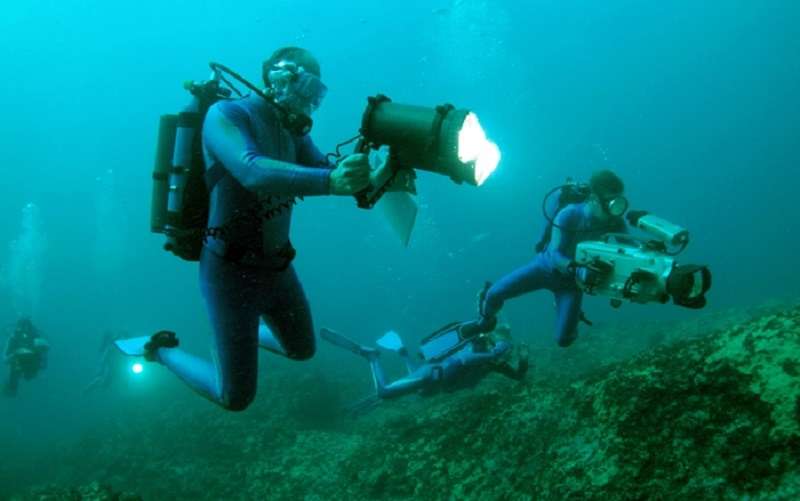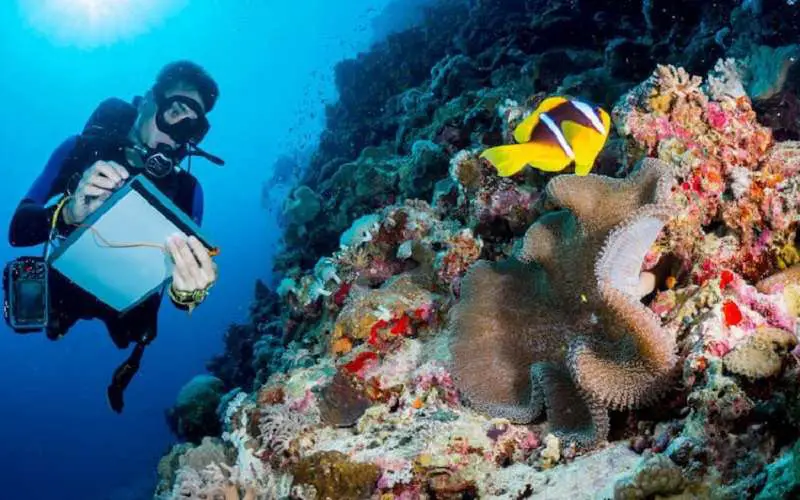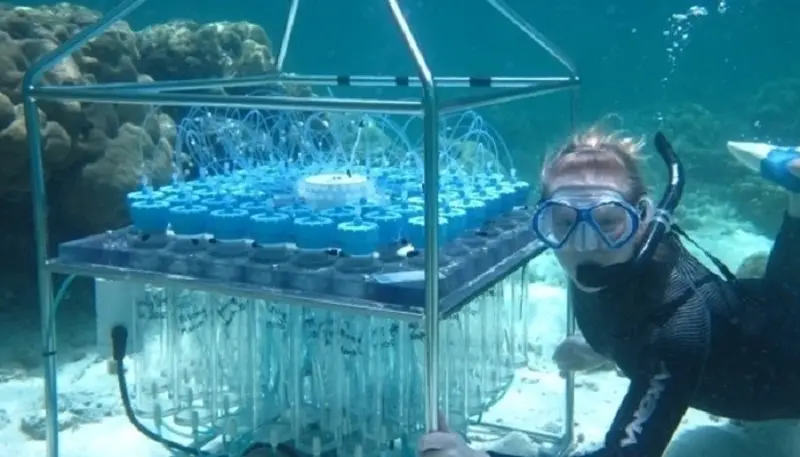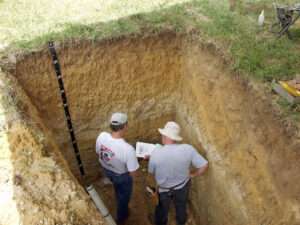Oceanographer Job Description
An Oceanographer is an environmental scientist who studies marine life and the ocean floor. He or she also conducts onshore and laboratory-based investigations.
Also Read – Microbiologist Job Description
Geological oceanographers study the ocean floor
A geological oceanographer is an individual who studies the processes of the ocean floor. Their studies focus on the conditions and processes of the oceans, including the processes that lead to the creation and destruction of sedimentary deposits. They also study processes that shape the ocean floor, including the movement of sand on beaches and the interactions between the ocean and atmosphere. Geological oceanographers also study the origins of the ocean’s structures, including its rocks and sediment.
Various water masses in the oceans are known as ocean basins. Each one has its own characteristics and can be traced using the methods used by oceanographers. They study the movement of these water masses, which are characterized by their temperature and salinity. Some of these water masses flow slowly, while others may move more rapidly. Some of these water masses are found near the coasts of different continents.
Other types of oceanographers focus on the physical properties of the sea. They study the physical properties of the sea, the chemical composition of the ocean, and the consequences of these processes on marine ecosystems. In contrast, geological oceanographers study the mineral and geological structure of the ocean floor. They study the processes that shape the ocean’s structure and mineral content, and use this knowledge to understand the development and origin of the oceans.
Various other types of oceanographers study the ocean floor. They study ocean currents, climate change, marine life, ocean circulation, plate tectonics, and the geology of the seafloor. They are also responsible for studying ocean life, and they use computer models and field experiments to help them study different aspects of ocean life.
Oceanographers study the oceans from the top to the bottom. Their work often combines multiple disciplines, including biology, chemistry, meteorology, and geology. They investigate the physical and biological attributes of the oceans. They also investigate the economic and technical potential of the oceans.

Also Read – Operational Researcher Job Description
Biological oceanographers study marine life
Biological oceanographers use a wide variety of research techniques to better understand the ocean’s ecosystems. Some of their work involves laboratory studies of individual organisms; others involve observations and measurements in the water. Others use research vessels and underwater submersible vehicles to reach communities deep in the ocean. Still others use specialized water sampling gear and instruments. In addition, they use methods from physiology, immunology, and molecular biology to gain a better understanding of marine life.
Biological oceanographers also study the adaptation of marine life to changing environmental conditions, which can include natural and man-made disturbances. They study how organisms deal with ocean pollution, overfishing, and the movement of energy and carbon in ecosystems. They also monitor the growth and decline of marine ecosystems.
A career as a biological oceanographer requires an intensive academic program in marine biology. This allows you to gain experience and develop new skills in research, such as developing studies about ecological pollution. You will also have to enhance your communication skills, which is essential to effectively report on your findings. If you love learning about marine life and studying it up close, you may want to pursue a career as a biological oceanographer.
While a bachelor’s degree is sufficient for an entry-level position in this field, a graduate degree is essential for the best job prospects. Graduate school usually involves a two-year master’s degree program where you can choose a specialty. The final step of graduate school involves a dissertation and research.
Many marine biologists work for local, federal, and international government organizations. These jobs are more secure and provide better opportunities for advancement. The salary is higher as well. The work environment is also more diverse, and you can study all types of organisms. From microscopic creatures to giant cetaceans, these scientists study the ocean’s ecosystems.
Biological oceanographers work with scientists from different fields to study life in the oceans. Their research focuses on the distribution, abundance, and ecology of marine organisms. They also study the processes that govern the spread and evolution of species. Their studies are often challenging because they involve extreme habitats. However, they are often rewarded with exciting results.

Also Read – Biotechnologist Job Description
Onshore work involves conducting lab-based investigations
The job description of an oceanographer is broad, and it includes collecting and analyzing data from the ocean and atmosphere. It may include investigating the matter and life forms found in ocean waters, as well as developing and submitting research proposals for grants. It also includes collaborating with other scientists and researchers in the field of marine sciences. To qualify for this career, you must have a Master’s degree in oceanography or related field, and you should have experience in marine science. It also requires good communication skills, which is crucial in the field.
Most oceanographers work on a contract basis, although some may work on a floating laboratory or research ship for extended periods of time. Other oceanographers may also work onshore, conducting lab-based investigations. An oceanographer job description also includes attending industry and professional meetings and conferences. For entry-level jobs, you must have a graduate or postgraduate degree. These degrees emphasize quantitative research and analytical reasoning, and are ideal for those who wish to work in oceanography. Most employers prefer candidates with at least a master’s degree.
Oceanographers often specialize in a specific area, such as marine biology, geology, or physics. These individuals often work in government agencies or private companies to conduct research. Their work includes collecting samples of water or the ocean floor and conducting lab-based investigations to collect data. They may also use digital scanning devices to gather statistical information about the ocean floor.
While the job description of an oceanographer includes numerous duties, the majority of oceanographers spend a significant amount of time conducting lab-based investigations. They conduct experiments and analyze data, as well as write reports about their findings. They also spend a great deal of time at sea, often working on research vessels or in submersibles. Their time at sea is often very demanding, and many oceanographers view it as an essential part of their career.
Many oceanographers also work in an administrative capacity, working for government agencies, universities, or private companies. They may work in offices or attend conferences. These scientists usually earn good salaries, and many also enjoy benefits, such as health insurance and a retirement plan.

Also Read – The Forensic Scientist Job Description
Salary for oceanographers
Salaries for oceanographers vary greatly from job to job and can depend on your experience and qualifications. Starting positions often require a bachelor’s degree, but many oceanographers also hold graduate degrees. Many research positions also require a doctorate. Many oceanographers get their first jobs through connections made during their education. Contacts in the school placement office or professors at colleges can help you locate a job. You can also apply directly to the places you want to work. Some jobs also require you to take a civil service test to qualify.
As the name suggests, oceanographers study the ocean and everything that goes with it, including currents, weather, and sea life. Their careers often involve blending a number of different disciplines, and are often highly collaborative. While the majority of their work is done in labs, oceanographers also spend considerable amounts of time on the ocean’s surface.
In 2004 the average salary for oceanographers was $91,347, and it will rise to $132,556 by 2021. The figures come from Office of Personnel Management’s Enterprise Human Resources Integration dataset and the Postal Service. The salaries for federal employees are published under open government laws. FederalPay provides this data for no commercial reasons and is provided in the interest of transparency and access in government.
Also Read – Fisheries Enforcement Officer Job Description
Useful Links:-
Dubai Job Vacancies, Engineering Job Vacancies in Dubai, Top Dubai Jobs, Multiple Dubai Job Vacancies, Dubai Jobs, Jobs in Dubai, Dubai Job vacancies, Dubai Vacancies, Abu Dhabi Job Vacancies, Engineering Job Vacancies in Abu Dhabi, Top Abu Dhabi Jobs, Multiple Abu Dhabi Job Vacancies, Abu Dhabi Jobs, Jobs in Abu Dhabi, Abu Dhabi Job vacancies, UAE Vacancies, UAE Job Vacancies, Engineering Job Vacancies in UAE, Top UAE Jobs, Multiple UAE Job Vacancies, UAE Jobs, Jobs in UAE, UAE Job vacancies, UAE Vacancies
Click Here to find the latest Job Vacancies





























